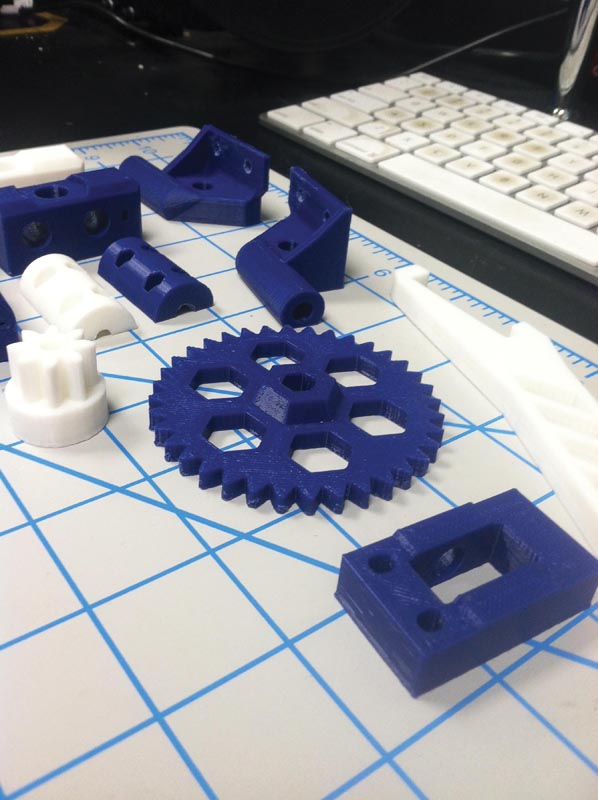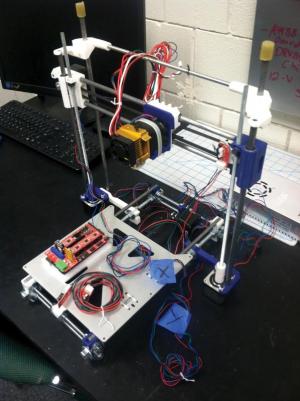Creating a Creator: Using a 3D Printer to Build a 3D Printer from Scratch
Winter
2017
Building Blocks - Undergraduate Research and Outreach Projects
Creating a Creator: Using a 3D Printer to Build a 3D Printer from Scratch
Ryan Bouricius, SPS Member
Ithaca College

That started with a single machine in the back of Ithaca College Professor Michael "Bodhi" Rogers’ geophysical archaeology laboratory has grown into a full-fledged 3D Laboratory with fifteen 3D printers and several 3D scanners. The lab has served to raise awareness for the wide range of creative applications using such technology in industries like healthcare, robotics, automotive, and national defense. In the midst of the growth in 3D technologies at Ithaca College, our SPS chapter received an SPS Chapter Research Award to 3D print a 3D printer.
Many of the pieces required to build a 3D printer are often made from plastic, so there is no reason that these pieces cannot be 3D printed themselves. The Prusa i3 open-source 3D printer is a great example of this idea. There are schematics online for printing several structural components of the Prusa i3 as well as parts lists for non-printed components. Everything that is not 3D printed is standard hardware or electronic components, such as stepper motors and steel rods.
The project began with our team downloading the stereolithography files for all of the 3D-printed pieces. We used these files to print the structural pieces to hold the steel rod frame together, belt holders to move the tool head along each axis, and other components. We printed these pieces and purchased the standard hardware and electronic components. We assembled the printer and studied the purpose of each piece along the way.
People all over the world have printed versions of the Prusa i3. Despite small differences in size and layout, many of these printers are effectively the same. Our club is now developing ideas for modified 3D printers. Like the Prusa i3, these printers would still print through a process called fused-deposition modeling (FDM), but they would feature new characteristics and efficiencies.
Additionally, we have been focusing on how to 3D print more of the necessary components. For example, most designs call for high-precision metal linear bearings, allowing entire assemblies to move together along perpendicular steel rods. These are more durable and reliable than their printed counterparts would be, however the printed  set would be dramatically cheaper to manufacture and could be produced and modified onsite. A cost/benefit analysis will be a feature of our research as we use this printer for future projects.
set would be dramatically cheaper to manufacture and could be produced and modified onsite. A cost/benefit analysis will be a feature of our research as we use this printer for future projects.
When it is completed, the new printer will be used for outreach activities, class projects, and club fundraising events. It will make a unique addition to the existing fleet of printers.
Students involved in this project have gained valuable experience working with the world of 3D design. Seeing how the various aspects of the printer work together—mechanical, electrical, and digital—will help students with futures in research laboratories and STEM industries in the years to come. //
GET UP TO $2,000 FOR SPS CHAPTER RESEARCH!
For details, visit the SPS website at www.spsnational.org/awards/chapter-research.
More from this department
Building Blocks - Undergraduate Research and Outreach Projects
